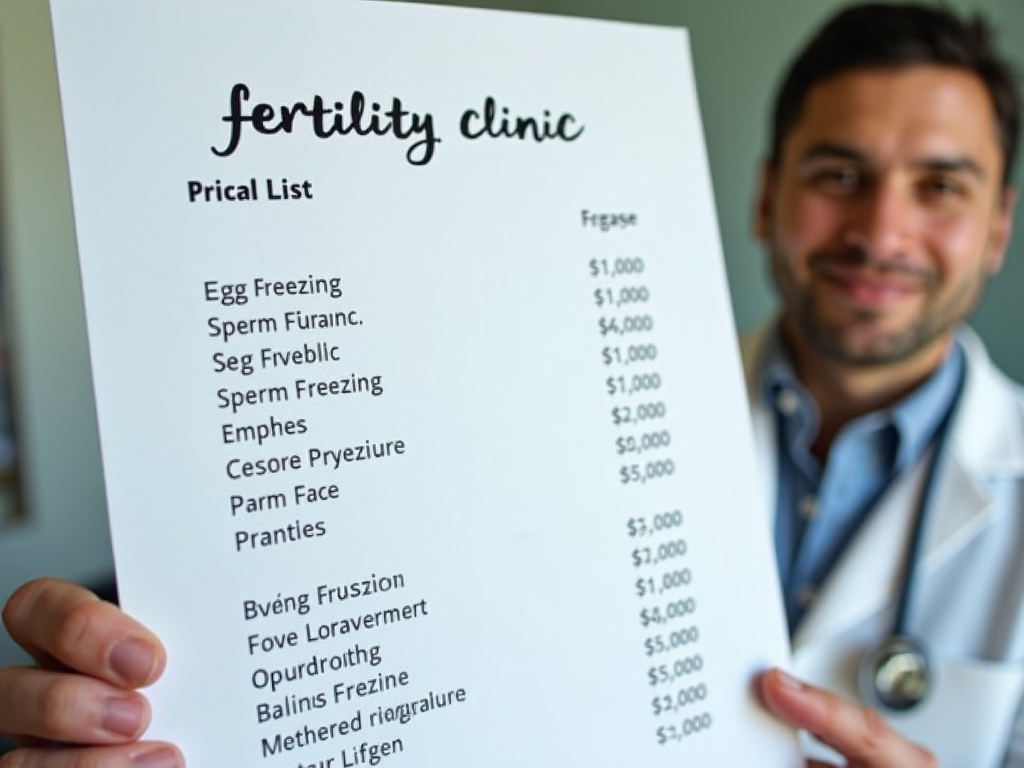Navigating Insurance for Fertility Treatments: A Comprehensive Guide
March 20, 2025, 7:58 a.m.
Fertility treatments can be a beacon of hope for many couples struggling with infertility. However, the financial aspect of these treatments can be daunting. Understanding how insurance covers fertility treatments is crucial for managing costs and reducing stress. This guide will walk you through the essentials of navigating insurance for fertility treatments, providing you with the knowledge and tools to make informed decisions.
Understanding Fertility Treatments
Fertility treatments encompass a range of medical procedures designed to help individuals and couples conceive. These can include medications, intrauterine insemination (IUI), in vitro fertilization (IVF), and fertility preservation techniques like egg freezing. Each treatment comes with its own set of costs and insurance coverage considerations. For instance, IUI is often less expensive and may be covered by insurance, while IVF can be more costly and coverage varies widely.
Cost Breakdown of Fertility Preservation Treatments
Fertility preservation, such as egg or sperm freezing, is often considered for those facing medical treatments that could affect fertility or for personal reasons. The costs can vary widely:
- Egg Freezing: The process typically costs between $10,000 and $15,000 per cycle, including medication and storage fees.
- Sperm Freezing: This is generally less expensive, ranging from $1,000 to $1,500, plus annual storage fees.
Factors influencing these costs include the clinic's location, the specific procedures required, and any additional services like genetic testing.

To give you a clearer picture, here's a table outlining the average costs of common fertility preservation treatments:
| Treatment | Average Cost | Additional Fees |
|---|---|---|
| Egg Freezing | $10,000 - $15,000 | Medication, storage |
| Sperm Freezing | $1,000 - $1,500 | Annual storage |
| Embryo Freezing | $12,000 - $18,000 | Medication, storage |
These costs can add up quickly, making it essential to understand your insurance coverage.
Navigating Insurance Policies
Insurance coverage for fertility treatments can be complex. Policies vary by provider and state, and not all treatments are covered. Here are some key points to consider:
- Coverage Types: Some insurance plans cover diagnostic tests but not treatments, while others may cover certain treatments like IUI but not IVF.
- Pre-authorization: Many insurers require pre-authorization for fertility treatments, meaning you need approval before proceeding.
- Lifetime Maximums: Some policies have a lifetime maximum benefit for fertility treatments, which can range from $10,000 to $100,000.
Understanding your policy's specific terms is essential. Look for sections on "infertility" or "reproductive services" in your insurance documents.
For example, some plans may cover the initial consultation and diagnostic tests but exclude coverage for procedures like IVF. Others might cover a certain number of IUI cycles before approving IVF. It's crucial to read your policy carefully or speak with your insurance provider to clarify what is and isn't covered.

Tips for Maximizing Insurance Coverage
To get the most out of your insurance benefits, consider these strategies:
- Review Your Policy: Carefully read your insurance policy or contact your provider to understand what is covered.
- Get Pre-authorization: Ensure you have the necessary approvals before starting treatment.
- Keep Detailed Records: Document all communications with your insurance company and healthcare providers.
- Appeal Denied Claims: If a claim is denied, don't hesitate to appeal. Provide additional documentation or seek support from your healthcare provider.
Appealing a denied claim can be a daunting process, but it's often worth the effort. Many individuals have successfully overturned denials by providing additional medical evidence or clarifying policy terms.
Here's a step-by-step guide to appealing a denied claim:
- Step 1: Review the denial letter to understand the reason for the denial.
- Step 2: Gather supporting documentation, such as medical records or letters from your healthcare provider.
- Step 3: Write a clear and concise appeal letter, addressing the specific reasons for the denial.
- Step 4: Submit your appeal within the required timeframe, usually 30 to 60 days.
- Step 5: Follow up with your insurance provider to ensure your appeal is being processed.
Personal Insights and Experiences
Navigating insurance for fertility treatments can be emotionally and financially challenging. Many individuals share stories of frustration and perseverance. For example, one couple spent months appealing a denied claim for IVF, eventually succeeding after providing extensive medical documentation. Their experience highlights the importance of persistence and thorough record-keeping.
Another individual shared how they maximized their coverage by timing their treatments to align with their insurance policy's renewal date, ensuring they could take advantage of any changes in coverage.

These personal stories underscore the importance of being proactive and informed. By understanding your insurance policy and advocating for yourself, you can increase your chances of receiving the coverage you deserve.
Summary
Navigating insurance for fertility treatments requires patience, persistence, and a thorough understanding of your policy. By familiarizing yourself with the costs, coverage options, and strategies for maximizing benefits, you can reduce the financial burden and focus on your journey to parenthood.
Remember, you're not alone in this process. Many resources and support networks are available to help you navigate the complexities of insurance and fertility treatments.